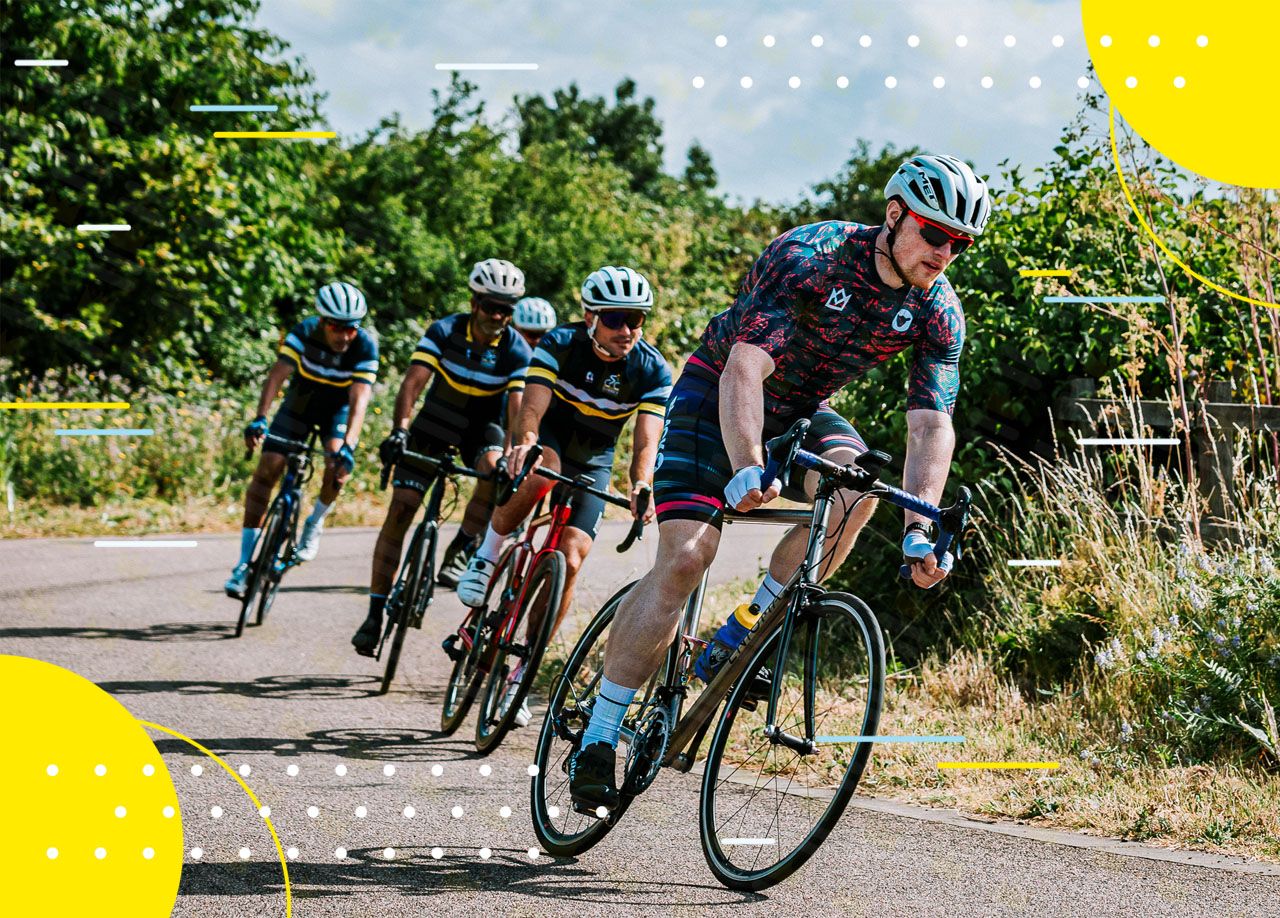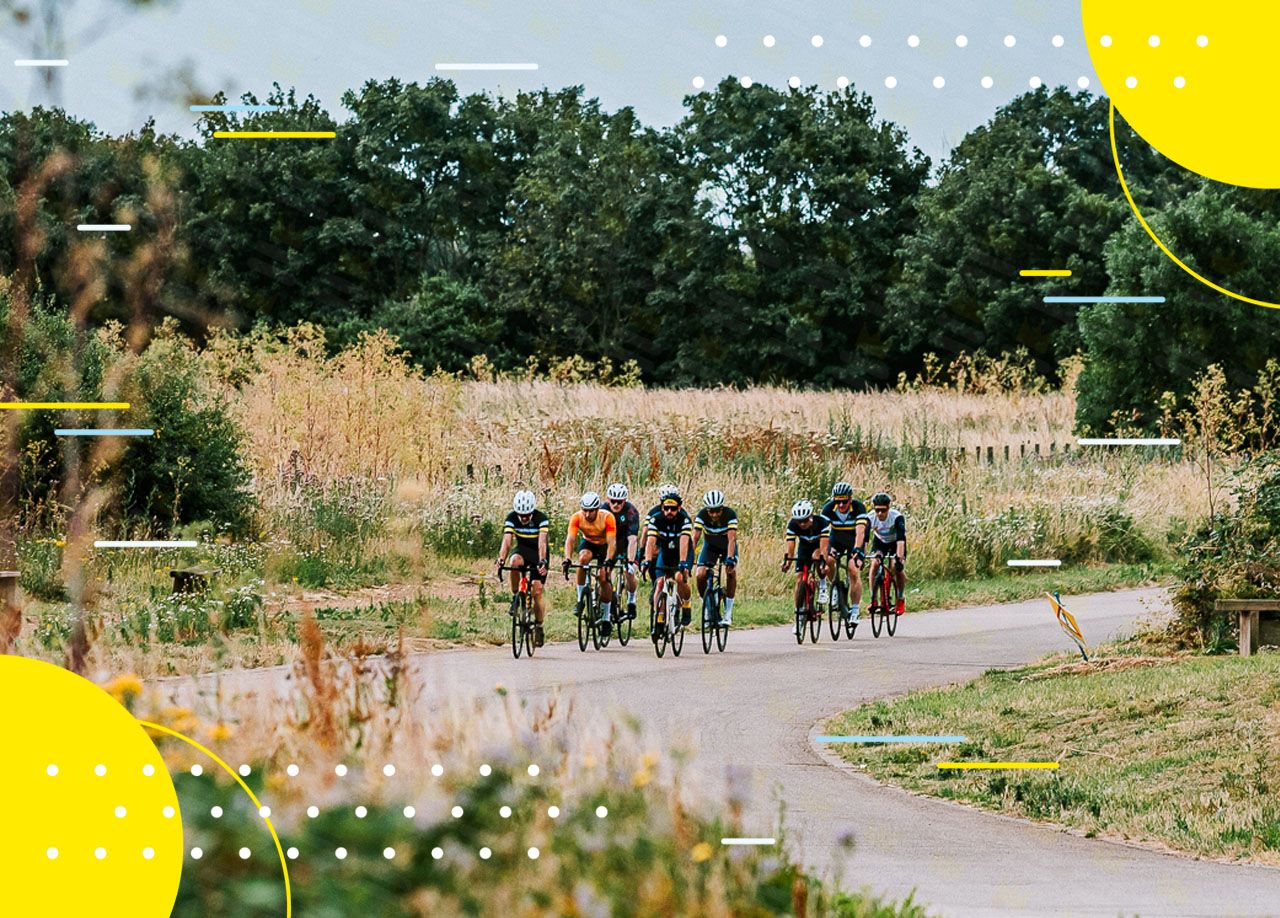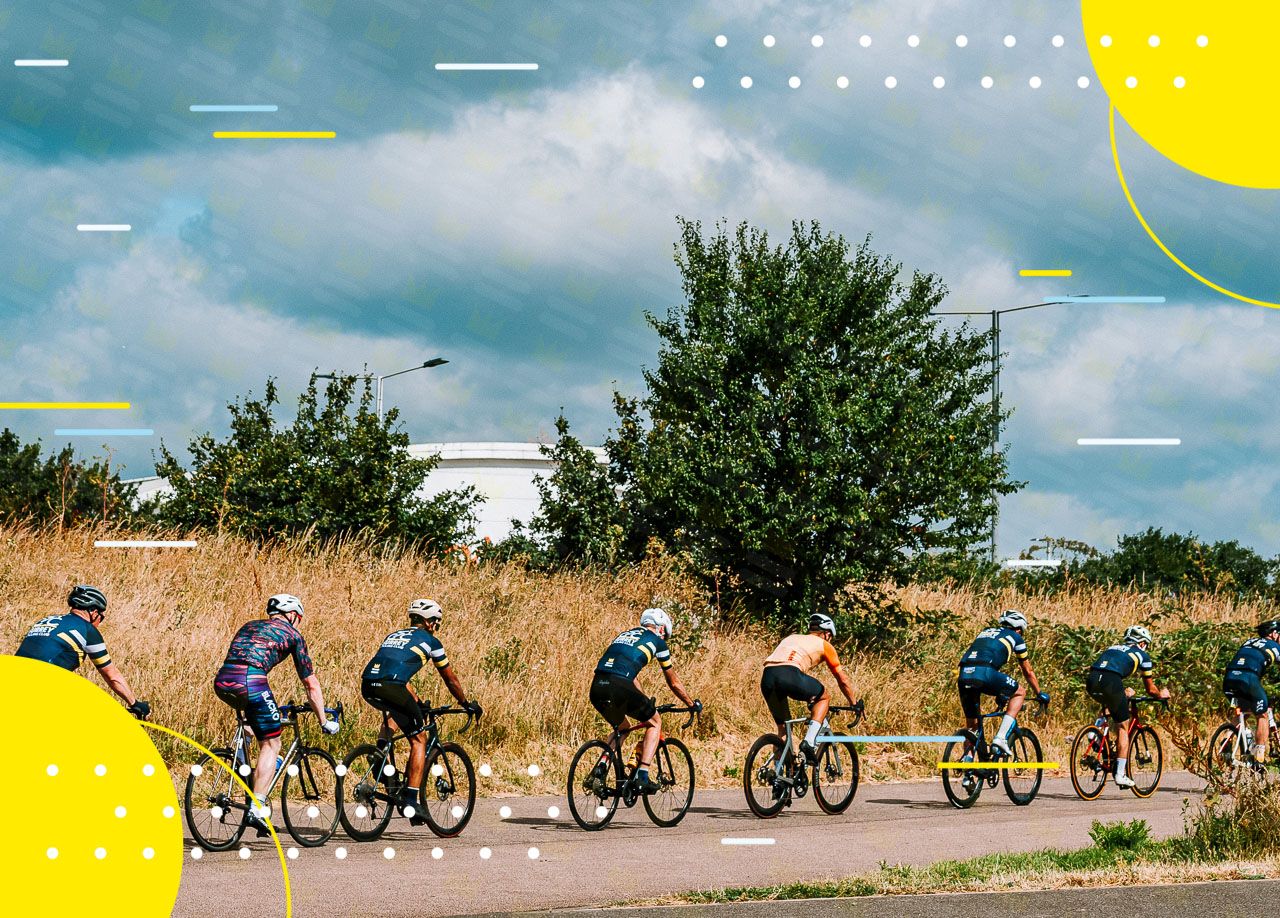

Introduction
Table of Contents
Part 1: The Chain-Gang Formation
1.1 Understanding the Chain-Gang Formation

1.2 Benefits of the Chain-Gang Formation
The chain-gang formation offers several benefits, including improved aerodynamics. By riding in close proximity to one another, cyclists can take advantage of drafting, which reduces wind resistance and conserves energy. Additionally, the formation enhances group speed by sharing the workload among riders. This allows the group to maintain a higher average speed compared to individual efforts. Riding in a chain-gang also helps develop bike handling, communication, and teamwork skills, all of which are essential for group rides and races. Finally, when executed correctly, chain-gangs can increase safety by maintaining a predictable, organised group structure.
Benefits of the Chain-Gang Formation:
- Improved aerodynamics: The chain-gang formation allows cyclists to take advantage of drafting, reducing wind resistance and conserving energy.
- Enhanced group speed: By sharing the workload, cyclists can maintain a higher average speed compared to individual efforts.
- Skill development: Riding in a chain-gang hones bike handling, communication, and teamwork skills.
- Increased safety: Properly executed chain-gangs can reduce the risk of accidents by maintaining a predictable, organised group structure.
1.3 How to Ride in a Chain-Gang Formation
To ride successfully in a chain-gang formation, it's important to focus on proper positioning. Maintain a close but safe distance from the wheel in front of you, usually about 50-100cm, depending on your comfort level. Communication is also crucial in a chain-gang formation. Use hand signals and verbal cues to alert riders behind you of upcoming hazards, changes in pace, or when you're about to peel off. When transitioning between the two lines, do so smoothly to maintain the group's speed and efficiency. As you reach the front of the faster line, increase your effort to keep the pace consistent. When peeling off, signal your intention and gradually drift to the slower line. Maintaining a steady pace in both lines is essential for a smooth and efficient chain-gang formation.
How to Ride in a Chain-Gang Formation:
- Positioning: Maintain a close, but safe distance from the wheel in front of you. This usually means staying about 50-100cm away, depending on your comfort level.
- Communication: Use hand signals and verbal cues to alert riders behind you of upcoming hazards, changes in pace, or when you're about to peel off.
- Smooth transitions: As you reach the front, increase your effort to maintain the group's speed. When peeling off, signal your intention and gradually drift to the slower line.
- Consistent effort: Maintain a steady pace in both lines to keep the formation smooth and efficient.
Part 2: The Paceline Formation
2.1 Understanding the Paceline Formation

2.2 Benefits of the Paceline Formation
The paceline formation provides a significant aerodynamic advantage, allowing riders to save energy and maintain speed. By riding in a single line, cyclists also foster a sense of unity and cooperation among group members. This formation is versatile and can be adapted to suit varying terrain, wind conditions, and group sizes. Riding in a paceline enhances safety by reducing the risk of collisions and allowing for better visibility of road hazards.
Benefits of the Paceline Formation:
- Drafting efficiency: The paceline provides a significant aerodynamic advantage, allowing riders to save energy and maintain speed.
- Improved cohesion: Riding in a single line fosters a sense of unity and cooperation among group members.
- Versatility: The paceline formation can be adapted to suit varying terrain, wind conditions, and group sizes.
- Enhanced safety: Single-file riding reduces the risk of collisions and allows for better visibility of road hazards.
2.3 How to Ride in a Paceline Formation
When riding in a paceline formation, it's important to maintain a close and consistent distance to the wheel in front of you. Aim for a distance of 50-100cm, depending on your experience and comfort level. Communication is key in a paceline; use hand signals and verbal cues to indicate hazards, changes in pace, or when you're about to rotate off the front. When it's your turn to move to the back, signal your intention, peel-off to the side of the group, ease-off your speed slightly, and smoothly merge behind the last rider. Maintaining a consistent pace throughout the paceline is crucial, as it ensures that each rider contributes evenly to the group's effort.
How to Ride in a Paceline Formation:
- Positioning: Stay close to the wheel in front of you, aiming for a distance of 50-100cm, depending on your experience and comfort level.
- Communication: Use hand signals and verbal cues to indicate hazards, changes in pace, or when you're about to rotate off the front.
- Smooth rotations: When it's your turn to move to the back, signal your intention, peel-off to the side of the group, ease-off your speed slightly, and smoothly merge behind the last rider.
- Consistent pace: Maintain a steady pace throughout the paceline, ensuring that each rider contributes evenly to the group's effort.
Part 3: Comparing Chain-Gang and Paceline Formations
3.1 Pros and Cons of Chain-Gang Formation

Pros:
- Higher average speed: Chain-gangs allow for more efficient energy distribution, resulting in faster overall speeds.
- Better recovery: The presence of a slower line enables riders to recover while still maintaining a high group speed.
- Adaptable to wind conditions: Chain-gangs excel in crosswind situations, allowing riders to share the work of cutting through the wind.
Cons:
- Requires greater skill and coordination: The constant movement between lines can be challenging for less experienced riders.
- Increased risk of overlapping wheels: The side-by-side nature of chain-gangs may lead to overlapping wheels, potentially causing accidents.
3.2 Pros and Cons of Paceline Formation

Pros:
- Simplicity: The single-file structure of pacelines makes them easier to manage and navigate, especially for less experienced cyclists.
- Versatility: Pacelines can be adapted to various terrains, wind conditions, and group sizes, making them a flexible option for group rides.
- Enhanced visibility: Riding single-file allows for better visibility of the road ahead and potential hazards.
Cons:
- Limited recovery: In a paceline, riders have less opportunity to recover since each rider spends more time at the front.
- Slower average speed: Due to limited recovery, pacelines may result in a slightly slower overall group speed compared to chain-gangs.
Part 4: Why Cyclists and Surrey Cycling Club Members Should Use Chain-Gang and Paceline Formations
4.1 Benefits of Incorporating Chain-Gang and Paceline Formations

- Efficiency: Both formations allow cyclists to save energy and maintain higher speeds through drafting and shared workload.
- Skill development: Riding in these formations helps develop bike handling, communication, and teamwork skills, ultimately improving overall performance.
- Safety: Properly executed chain-gangs and pacelines can reduce the risk of accidents by maintaining a predictable, organised group structure.
- Variety: Incorporating both formations into club rides adds an element of variety, keeping the rides engaging and challenging for all skill levels.
4.2 Recommendations for Surrey Cycling Club
- Skill-based training: Organise training sessions focused on the techniques and communication required for successful chain-gang and paceline riding.
- Gradual introduction: Start with paceline formations for beginner groups, then progress to chain-gangs as riders become more comfortable and skilled.
- Ride leader guidance: Ensure ride leaders are well-versed in the techniques and can provide clear instructions and support to riders during club rides.



